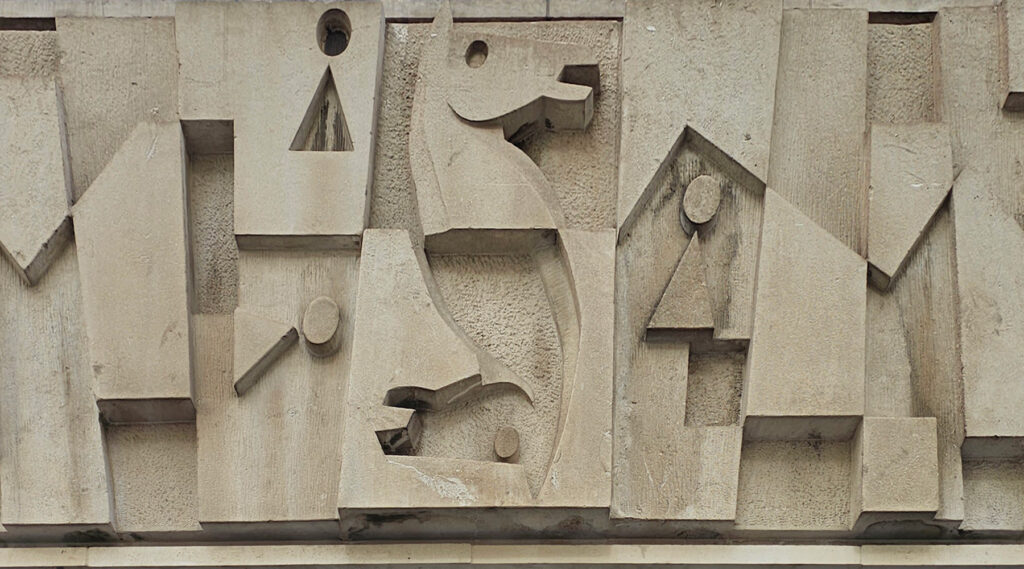A side street near St Paul’s Cathedral contains a building with an interesting stone frieze, which if you look carefully seems to be based on chess pieces.
The building, officially St Paul’s House, 10 Warwick Lane, was designed by Victor Heal and Partners in the 1960s as a replacement headquarters for the book publisher, Hodder & Stoughton to replace their neighbouring war-damaged offices.
The frize was carved from stone by Alan Collins in 1963 depicting chess pieces, said to be a reference to the publisher’s logo.
Alan Collins was an English-born sculptor noted for his work at Guildford Cathedral and the John F. Kennedy Memorial at Runnymede. After continuing his career in England, Collins moved to the United States and continued working there as an artist and, for more than 20 years, as a professor of art at Seventh-day Adventist universities.
Most of his work was biblical in nature, particularly in later years, so this frieze of secular chess pieces is unusual.
It was commissioned by the first occupants of the building, the publishers, Hodder & Stoughton, which had been based in nearby Warwick Square since 1906, but the area was badly damaged during WWII, necessitating a replacement office.
The artwork is called Chessboard, and is said to be based on the publisher’s “chess knight” logo, but that doesn’t seem to have been their logo at the time. It seems more likely to be based on one of their subsidiary imprints, Knight Books, as that does use the chess logo using the Knight piece that had been designed by Sir Misha Black.
Hodder & Stoughton moved out in 1976, but the frieze remained.
The frize used to sit above a very small entrance as a slightly protruding artwork, but in 2012, the building was redeveloped internally, and the ground floor was stripped out of its stone facade with small windows, and replaced with large windows, while the narrow entrance was widened to the same width as the frieze.
There had been a plan to split the frize into three pieces and mount them inside the lobby, but the City of London wanted the frieze preserved as a single strip outside the building.
What they did was create a glazed window above the frieze and create a stone frame around both so that they match, while creating the impressive entrance that office users want these days.
So we can still admire the 1960s chess frieze, and if you have a chess playing friend, take them on a detour when in the area so you can delight them with your discovery.










The chess motif might also come from the fact that the standard chess set is called the Staunton set (n.b. not Stoughton).